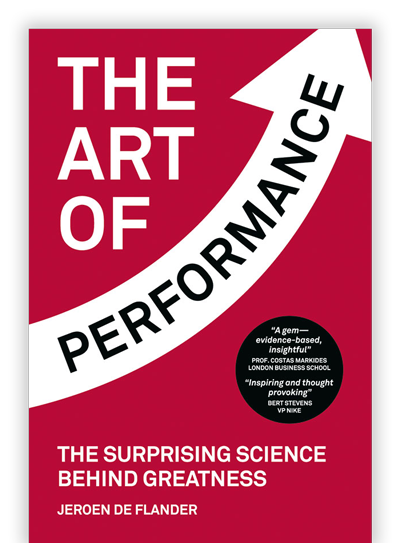From the book The Art of Performance
Educational psychologist László Polgár had just finished studying the biographies of 400 geniuses. From Socrates to Einstein, he researched them all. And now he was preparing for one of the most extreme experiments ever done—so extreme that people thought he was going crazy. A local government even told him to see a psychiatrist to “heal him of his delusions.” But Polgár was determined. He only needed a wife who was willing to jump on board.
He started corresponding with a number of young ladies, outlining the pedagogical project he had in mind. Klára, a foreign language teacher, was one of them. “Like many at the time, I thought he was crazy” Klára recalls, “but we agreed to meet.” When they were dating, Klára was charmed by him and got interested in his bold idea. They ended up marrying. And so the experiment began.
They named their first daughter Susan. And soon Sofia and Judit followed. László and Klára quit their jobs and devoted their lives to home schooling their 3 children. Polgár believed talent did not exist. Anyone could become a master in any field—the top 3 percent—if you applied the right kind of practice. “A genius is not born, but is educated and trained” Polgár tells The Washington Post. “When a child is born healthy, it is a potential genius.” Polgár had always been an advocate of the practice theory as opposed to the talent theory. He wrote papers on the subject and lobbied with government to change the education system. But nobody wanted to listen. “Children have extraordinary potential, and it’s up to society to unlock it,” Polgár says. “The problem is that people, for some reason, do not want to believe it. They seem to think that excellence is only open to others, not themselves.” It seems that people’s mindsets are programmed incorrectly.
As nobody wanted to listen to what he had to say, the only way was to prove it. He was going to raise his children to become geniuses. It took him a long time to pick a field to focus on. After his first daughter was born, he knew it was time to finally make a decision. “I needed Susan’s achievements to be so dramatic that nobody could question their authenticity,” he says. “That was the only way to convince people that their ideas about excellence were all wrong. And then it hit me: chess.” He decided to go for chess because the measurement was objective. “If my child had been trained as an artist or novelist, people could have argued about whether she was genuinely world-class or not. But chess has an objective rating based on performance, so there is no possible argument.” In other words, if he announced upfront that his children would be chess geniuses and was able to pull it off, his theory about mastery was proven.
Polgár, an amateur chess player himself, dived into the depths of the game and learned as much as possible about chess training. With the help of his wife, he turned their modest apartment in the heart of Budapest into a real chess temple. It had a library with thousands of chess books stuffed onto shelves on one wall, with another wall lined with sketches of chess scenes. A file card system took up an entire third wall. It included records of previous games and even an index of potential competitors’ tournament histories.
Once he felt sufficiently developed as a trainer, he started to introduce chess to each of his daughters. And while the children were also learning all the regular subjects and spoke several languages, chess was always at the core.
***
Here’s what happened:
At age 4, Susan, the eldest of the Polgár sisters, won her first chess tournament, the Budapest Girls Under-11 Championship, with a 10-0 score. At age 12, she won the World Under-16 Girls Championship. At age 15, despite restrictions on her freedom to play in international tournaments, she became the top-rated female chess player in the world. At age 22, Susan was the first woman to earn the men’s Grandmaster title in the conventional way—the highest rank in chess. By the end of her career, she had won the World Championship for women on 4 occasions and 5 chess Olympiads. She remains the only person in history, male or female, to win the Chess Triple Crown (the Rapid, Blitz, and Classical World Championships). In December 2006, she married her long-time business manager and friend, Paul Truong. She now lives in the US where she runs a chess institute and coaches the Webster University chess team, the number 1 ranked team in the nation.
Sofia, the middle sister, won the gold medal at the under-11 Hungarian Championship for girls, the World Under-14 championship for girls, and numerous chess Olympiads and championships. But she is best known for the ‘Miracle in Rome’ where she won 8 straight games against many of the greatest male players. “The odds against such an occurrence must be billions to 1,” one chess expert wrote. It is still seen as one of the most extraordinary chess performances in history. She married fellow chess player Yona Kosashvili and moved to Israel. She now helps to run a chess website and is an acclaimed painter.
Judit, the Benjamin of the family, is considered the best female player of all time. At the age of 12, she was the youngest player ever to break into the Top 100 players’ rating list, ranking number 55. At the age of 15 years and 4 months, she became Grandmaster. At the time, she was the youngest to have done so, breaking the record previously held by former World Champion Bobby Fischer. She defeated 11 current or former world champions in either Rapid or Classical Chess, including Boris Spassky, Anatoly Karpov, and Garry Kasparov. She occupied the number 1 position for 26 years until she retired in 2015. Today she lives with her husband and 2 children. She authored 2 children’s books on chess and is Head Coach of the Hungarian National Men’s Chess Team. She also founded the Judit Polgár Chess Foundation to bring chess as an educational tool to children in schools.
***
By publically declaring that his children would become geniuses even before they were born, Polgár took a huge gamble. He could be ridiculed and be the laughing stock of science by stating this upfront.
But even then, the talent myth was hard to kill. When his eldest daughter Susan won a local competition as a 4-year-old, the local newspaper called her a ‘genius.’ And father László remembers many occasions when he was congratulated by other parents for having such talented daughters.
Although Polgár was criticized by some for encouraging his daughters to focus so intensely on chess, the girls later said that they had enjoyed it all. “We spent a lot of hours on the chess board, but it did not seem like a chore because we loved it,” Susan recalls. Father Polgár, always careful not to push his daughters too hard, once found Sofia in the bathroom in the middle of the night, a chessboard balanced across her knees and said “Sophia, leave the pieces alone.” Her reply… “Daddy, they won’t leave me alone!” László Polgár ignited their interest and made them care about the game. They became passionate about chess.
***
We are all in awe when we discover the work of masters—whether it’s a painting from Monet, a world-class goal from Ronaldo, a musical piece from Mozart, or the innovative ideas from Elon Musk and Steve Jobs in the business world. We admire their greatness. And it’s the right thing to do. Amazing performers should inspire us. But if we’re not careful, when we believe that talent is what got them there, their mastery might discourage us. Why would we try our best if talent and not effort is the ultimate success predictor? Why would we make sacrifices if talent ultimately determines greatness.
And while there might be a few other factors at play, can’t we all agree that talent is overrated? Can’t we all agree that the road to greatness is not paved with talent and good genes? It’s time to kill the talent myth and adopt a different mindset.
Want to discover the real drivers behind top performance? Check out the book The Art of Performance




